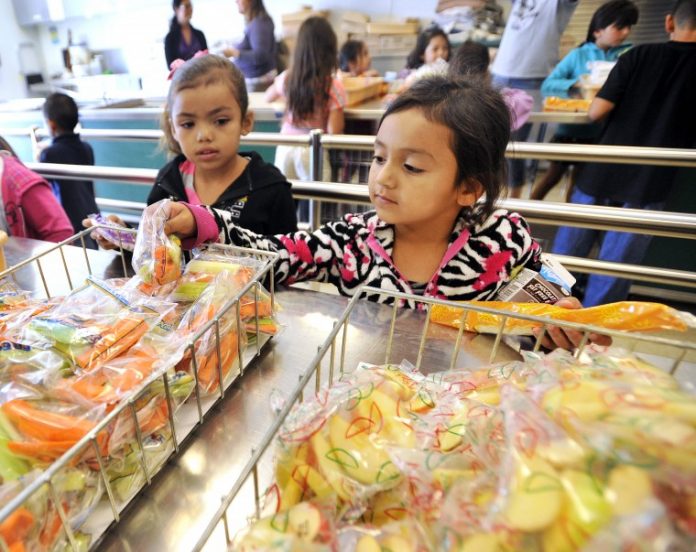
Public schools in San Benito County won’t be offering much white bread or whole milk in school meals following stricter U.S. Department of Agriculture nutrition standards effective earlier this month.
“In theory, I support the changes because I understand the purpose of the changes is to improve the overall nutritional quality of the meals, and another purpose is to help fight childhood obesity, which is a big problem in our county,” said Jennifer Bange, the clinical nutrition manager at Hazel Hawkins Memorial Hospital. “From a personal perspective as a dietitian, I have some concerns of offering only fat-free or low-fat milk.”
The new rules – which went into effect July 1 for all schools that participate in the National School Lunch Program – mean more whole grains, only fat-free or low-fat milk, and reduced saturated fats, trans fats and sodium.
Bange worries that providing only low-fat or non-fat milk won’t help all students – including athletes and teenage boys who have a higher caloric intake each day or underweight kids who might need the boost of a few more calories.
The healthier meal requirements are a key component of the broader Healthy, Hunger-Free Kids Act championed by First Lady Michelle Obama as part of her Let’s Move! campaign, according to the USDA’s Food and Nutrition Service website.
“We’ve already kind of been going in that direction so it’s not going to be a drastic change for us,” said John Teliha, director of nutrition, maintenance, operations and warehouse services for the Hollister School District.
The district already bars vending machines. Starting next year, the a la carte snack carts selling Cheetos and Gatorade at junior highs will also disappear.
Food vendors are doing their best to adjust to the new standards so they can continue to partner with the school districts, Teliha said.
Items such as Hot Cheetos won’t meet the new nutrition standards next year, so food companies are looking into developing new, healthier products including hot cheez-its.
“I taste-tested it,” Teliha said. “They’re really good.”
The new restrictions first started phasing in back in 2012 as part of the first overhaul of school meal requirements in more than 15 years.
“They’ve been increasing the restrictions,” said Teliha. “They’ve been gradually phasing it in. This is supposed to be the final step.”
Under the new restrictions, all foods offered must have no trans fats, meaning some types of sweet rolls, cookies and cakes are out of the question for school menus. Most manufacturers already changed their production processes to cut out trans fats after the scientific community became concerned that eating those fats increased a person’s risk of certain health conditions.
“I think that’s beneficial because the research has strongly linked trans fat consumption with heart disease, and in my practice I have seen children that are showing the beginning signs of heart disease,” Bange said.
For Teliha, the challenge is getting students interested in the school lunches so they can benefit from meals designed with nutrition in mind.
“That’s kind of what we do – is we really try to focus on not only what’s going to meet our guidelines, so we meet all the regulations of the program, but also what appeals to our students,” Teliha said.
Those students that take their lunch money and splurge on junk food and snacks don’t get the same nutritional benefits as those eating the carefully designed school lunches, meaning the program’s success depends on how many students eat the meals.
“Ultimately, it will only benefit the community as a whole if more children are eating the school lunch,” Bange said. “Whether or not these changes will decrease the obesity rate will depend on how many children are actually eating this food.”
Old requirements:
– No specifications as to which types of vegetable subgroups are served each day
– Whole grains encouraged
– Variety of milk fat contents allowed
– 1/2 cup of fruit provided per day (vegetable substitutions allowed)
– Trans fats allowed
New requirements:
– Weekly requirement for subgroups of vegetables including: dark green, red/orange, beans/ peas and starchy foods.
– All grains must contain at least 50 percent whole-grain meal or flour. The remaining grains must be enriched.
– Milk must be fat-free or low-fat. Flavored milk must be fat-free.
– 1 cup of fruit provided each day (vegetable substitution allowed)
– No trans fats allowed
SOURCE: The U.S. Department of Agriculture’s Food and Nutrition Service









